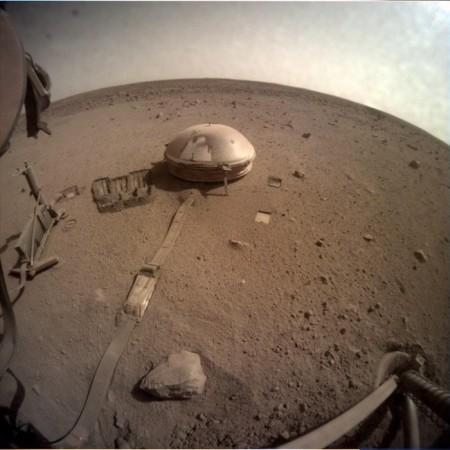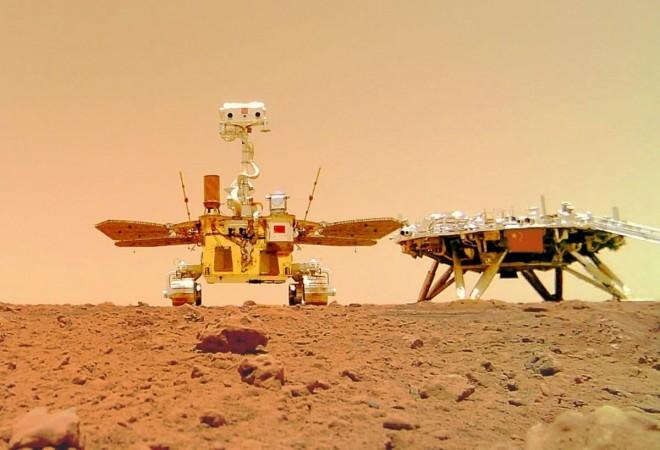The MIT-led Mars Oxygen In-Situ Resource Utilization Experiment, or MOXIE, has been successfully making oxygen from the Red Planet's carbon-dioxide-rich atmosphere since February 2021, when it touched down on the Martian surface as part of NASA's Perseverance rover mission.
In a study published in the journal Science Advances, researchers report that, by the end of 2021, MOXIE was able to produce oxygen on seven experimental runs, in a variety of atmospheric conditions, including during the day and night, and through different Martian seasons. In each run, the instrument reached its target of producing six grams of oxygen per hour — about the rate of a modest tree on Earth.

Researchers envision that a scaled-up version of MOXIE could be sent to Mars ahead of a human mission, to continuously produce oxygen at the rate of several hundred trees. At that capacity, the system should generate enough oxygen to both sustain humans once they arrive, and fuel a rocket for returning astronauts back to Earth.
So far, MOXIE's steady output is a promising first step toward that goal.
"We have learned a tremendous amount that will inform future systems at a larger scale," says Michael Hecht, principal investigator of the MOXIE mission at MIT's Haystack Observatory.

"This is the first demonstration of actually using resources on the surface of another planetary body, and transforming them chemically into something that would be useful for a human mission," says MOXIE deputy principal investigator Jeffrey Hoffman, a professor of the practice in MIT's Department of Aeronautics and Astronautics. "It's historic in that sense."
Seasonal air
The current version of MOXIE is small by design, in order to fit aboard the Perseverance rover, and is built to run for short periods, starting up and shutting down with each run, depending on the rover's exploration schedule and mission responsibilities. In contrast, a full-scale oxygen factory would include larger units that would ideally run continuously.
Despite the necessary compromises in MOXIE's current design, the instrument has shown it can reliably and efficiently convert Mars' atmosphere into pure oxygen. It does so by first drawing the Martian air in through a filter that cleans it of contaminants. The air is then pressurized, and sent through the Solid OXide Electrolyzer (SOXE), an instrument developed and built by OxEon Energy, that electrochemically splits the carbon dioxide-rich air into oxygen ions and carbon monoxide.
Since the rover's landing in February 2021, MOXIE engineers have started up the instrument seven times throughout the Martian year, each time taking a few hours to warm up, then another hour to make oxygen before powering back down. Each run was scheduled for a different time of day or night, and in different seasons, to see whether MOXIE could accommodate shifts in the planet's atmospheric conditions.

"The atmosphere of Mars is far more variable than Earth," Hoffman notes. "The density of the air can vary by a factor of two through the year, and the temperature can vary by 100 degrees. One objective is to show we can run in all seasons."
So far, MOXIE has shown that it can make oxygen at almost any time of the Martian day and year.
Ahead of the game
As MOXIE continues to churn out oxygen on Mars, engineers plan to push its capacity, and increase its production, particularly in the Martian spring, when atmospheric density and carbon dioxide levels are high.
"The next run coming up will be during the highest density of the year, and we just want to make as much oxygen as we can," Hecht says. "So we'll set everything as high as we dare, and let it run as long as we can."
They will also monitor the system for signs of wear and tear. As MOXIE is just one experiment among several aboard the Perseverance rover, it cannot run continuously as a full-scale system would. Instead, the instrument must start up and shut down with each run — a thermal stress that can degrade the system over time.

If MOXIE can operate successfully despite repeatedly turning on and off, this would suggest that a full-scale system, designed to run continuously, could do so for thousands of hours.
"To support a human mission to Mars, we have to bring a lot of stuff from Earth, like computers, spacesuits, and habitats," Hoffman says. "But dumb old oxygen? If you can make it there, go for it — you're way ahead of the game." The research was supported, in part, by NASA.













